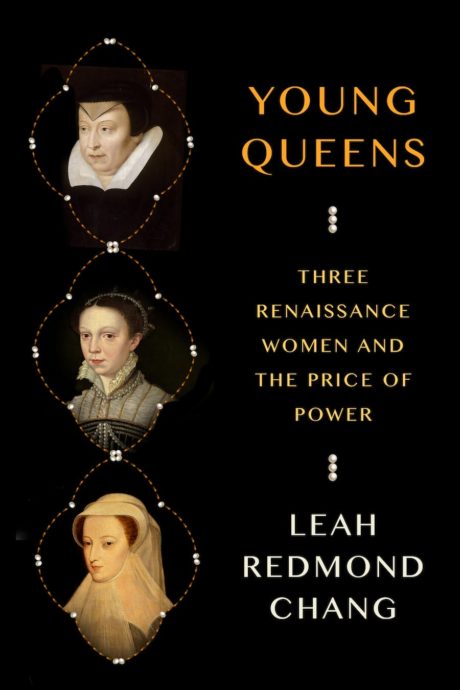From French literature and culture scholar Leah Redmond Chang, Young Queens: Three Renaissance Women and the Price of Power is the riveting intertwined story of three sovereigns as they exercise power in a world dominated by men.
Orphaned from infancy, Catherine de’ Medici endured a tumultuous childhood. Married to the French king, she was widowed by forty, only to become the power behind the French throne during a period of intense civil strife. In 1546, Catherine gave birth to a daughter, Elisabeth de Valois, who would become Queen of Spain. Two years later, Catherine welcomed to her nursery the beguiling young Mary, Queen of Scots, who would later become her daughter-in-law.
Together, Catherine, Elisabeth, and Mary lived through the sea-changes that rocked sixteenth-century Europe: a time of expanding empires, religious discord, and populist revolt, as concepts of nationhood began to emerge and ideas of sovereignty inched closer to absolutism. They would learn that to rule as a queen was to wage a constant war against the deeply entrenched misogyny of their time. A royal crown could exalt a young woman―equally, it could destroy her.
Following the three women from girlhood through young adulthood, and drawing from understudied archival materials, Young Queens illuminates the fierce bonds, rivalries, hopes, and desires that shaped their lives and changed the course of history. Their intertwined stories paint a larger picture of a world in which a woman could wield power at the highest level yet remain at the mercy of the state, her body serving as the currency of empire and dynasty, sacrificed to the will of husband, family, kingdom.
Praise for Young Queens
“A delightful historical study of women coming to the forefront in a world dominated by men.” –Kirkus, starred review
”Sheds valuable light on interpersonal feelings and familial relations often missed in more traditional accounts of political power.” –Publishers Weekly
“Well-written, detailed . . . [Young Queens] brings these women to life with insight and empathy, skillfully revealing ‘patterns about women and power’ . . . By centering these queens’ reigns and their relationships with one another, Chang gives readers new insight into their lives and legacies.” –Booklist
“A delicious historical romp through the intertwined lives of three bold women who found themselves at the seat of power in 16th-century Europe.” –People
“Chang does an excellent job describing the concerns of continental Europe through the personal relationships of her three subjects. She also emphasizes their commonalities: Ultimately, early modern queens’ successes and failures were informed by their ability to fulfill the traditional roles of wife and mother . . . Young Queens is a nuanced, intriguing overview not only of the interactions among three monarchs but also among three women.” –The Washington Independent Review of Books


